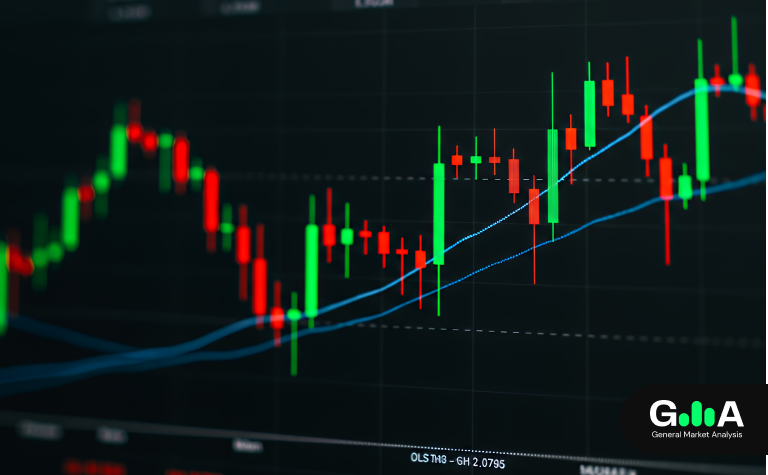IC Markets Asia Fundamental Forecast | 16 May 2024
What happened in the US session?
The Consumer Price Index (CPI) – which measures consumer inflation – looks to have ‘stalled’ in April after accelerating strongly in the first quarter of this year. Headline CPI rose 0.3% MoM, which was lower than the estimate of 0.4%, while the core came inline with estimates as it increased 0.3%. On an annualised basis, headline CPI moderated from 3.5% to 3.4% YoY while the core reading eased from 3.8% to 3.6% YoY, both results matching their respective estimates. Should inflationary pressures continue to dissipate further from this point, the probability of the first interest rate cut by the Federal Reserve increases.
After declining 0.9% MoM in January, retail sales rebounded strongly in February and March as 8 out of 13 categories posted higher sales to highlight robust consumer spending. However, sales were flat in April with 7 out of 13 categories registering declines. In addition, the figures for March were revised lower from 0.7% to 0.6% to highlight the moderation in consumer spending. This overnight data caused the dollar index (DXY) to dive from 104.80 to 104.28 while prices for spot gold raced towards $2,390/oz by the end of the US session.
What does it mean for the Asia Session?
Japan released its preliminary result for first quarter GDP which showed its economy falling into contraction as it shrank by 0.5% QoQ. Private consumption, which accounts for more than half of the economy, fell for the fourth straight quarter to mark the steepest fall in three quarters as consumers continued to reduce their spending in the face of expensive costs of living and sluggish wages. After falling sharply overnight, USD/JPY found support around 153.60 and reversed to stage a minor rebound this morning – this currency pair could climb back above 154 as the day progresses.
The Dollar Index (DXY)
Key news events today
Unemployment Claims (12:30 pm GMT)
Industrial Production (1:15 pm GMT)
What can we expect from DXY today?
Unemployment claims bucked a 4-week downward trend to jump 231K last week, higher than its estimate of 212K as well as its 4-week average of 210K. Higher-than-anticipated claims point to a potential weakening of the labour market and should numbers trend higher this week, it could be an ominous sign for this segment of the economy.
On a monthly basis, industrial activity has been mixed over the past six months but output looks to have stabilized in the first quarter of this year. Should industrial production miss its estimate of 0.1% for the month of April, it could pile on further downward pressures for the dollar.
Central Bank Notes:
- The Federal Funds Rate target range remained unchanged at 5.25% to 5.50% for the sixth meeting in a row.
- The Committee seeks to achieve maximum employment and inflation at the rate of 2% over the longer run and judges that the risks to achieving its employment and inflation goals have moved toward better balance over the past year.
- The economic outlook is uncertain, and the Committee remains highly attentive to inflation risks. Inflation has eased over the past year but remains elevated and in recent months, there has been a lack of further progress toward the Committee’s 2% inflation objective.
- Recent indicators suggest that economic activity has continued to expand at a solid pace while job gains have remained strong, and the unemployment rate has remained low.
- In assessing the appropriate stance of monetary policy, the Committee will continue to monitor the implications of incoming information for the economic outlook. The Committee would be prepared to adjust the stance of monetary policy as appropriate if risks emerge that could impede the attainment of the Committee’s goals.
- The Committee’s assessments will take into account a wide range of information, including readings on labour market conditions, inflation pressures and inflation expectations, and financial and international developments.
- In addition, the Committee will continue reducing its holdings of Treasury securities and agency debt and agency mortgage-backed securities. Beginning in June, the Committee will slow the pace of decline of its securities holdings by reducing the monthly redemption cap on Treasury securities from $60 billion to $25 billion.
- The Committee will maintain the monthly redemption cap on agency debt and agency mortgage-backed securities at $35 billion and will reinvest any principal payments in excess of this cap into Treasury securities.
- Next meeting runs from 11 to 12 June 2024.
Next 24 Hours Bias
Medium Bearish
Gold (XAU)
Key news events today
Unemployment Claims (12:30 pm GMT)
Industrial Production (1:15 pm GMT)
What can we expect from Gold today?
Unemployment claims bucked a 4-week downward trend to jump 231K last week, higher than its estimate of 212K as well as its 4-week average of 210K. Higher-than-anticipated claims point to a potential weakening of the labour market and should numbers trend higher this week, it could be an ominous sign for this segment of the economy.
On a monthly basis, industrial activity has been mixed over the past six months but output looks to have stabilized in the first quarter of this year. Should industrial production miss its estimate of 0.1% for the month of April, it could pile on further downward pressures for the dollar and boost gold once again.
Next 24 Hours Bias
Medium Bullish
The Australian Dollar (AUD)
Key news events today
Labour Force Report (1:30 am GMT)
What can we expect from AUD today?
The labour report for the month of April showed mixed results as nearly 39K jobs were added to the economy, beasting market estimates of 22.4K, while the unemployment rate jumped to 4.1% from 3.9% in the previous month. The Aussie was trading around 0.6715 prior to this data release but it tumbled hard to drop under the threshold of 0.6700 and is likely to slide lower as the day progresses.
Central Bank Notes:
- The RBA kept the cash rate target unchanged at 4.35%, marking the eighth pause out of the last nine board meetings.
- The CPI grew by 3.6% over the year to the March quarter, down from 4.1% cent over the year to December. Underlying inflation was higher than headline inflation and declined by less – this was due in large part to services inflation, which remains high and is moderating only gradually.
- The central forecasts, based on the assumption that the cash rate follows market expectations, are for inflation to return to the target range of 2 to 3% in the second half of 2025, and to the midpoint in 2026.
- In the near term, inflation is forecast to be higher because of the recent rise in domestic petrol prices, and higher than expected services price inflation, which is now forecast to decline more slowly over the rest of the year.
- Inflation is, however, expected to decline over 2025 and 2026.
- The path of interest rates that will best ensure that inflation returns to target in a reasonable timeframe remains uncertain and the Board is not ruling anything in or out.
- Next meeting is on 18 June 2024.
Next 24 Hours Bias
Medium Bullish
The Kiwi Dollar (NZD)
Key news events today
No major news events.
What can we expect from NZD today?
The Kiwi was dragged down by the mixed employment report of Australia and it reversed sharply from 0.6140 to drop towards the threshold of 0.6100 – these are the support and resistance levels for today.
Support: 0.6100
Resistance: 0.6150
Central Bank Notes:
- The Monetary Policy Committee kept the OCR unchanged at 5.50% for the sixth meeting in a row.
- The Committee remains confident that the current level of the OCR is contributing to an easing in capacity pressures to ensure inflation returns to target.
- However, current consumer price inflation remains above the Committee’s 1 to 3% target range. A restrictive monetary policy stance remains necessary to further reduce capacity pressures and inflation.
- The Committee discussed upside risks to the inflation outlook: persistent services inflation remains a risk and goods price inflation remains elevated while anticipated near-term increases to local government rates, insurance, and utility costs, could also further slow the decline in headline inflation.
- The Committee discussed downside risks to the inflation outlook: ongoing restrictive monetary policy in an environment of weak global growth could lead to a more rapid decline in inflation than expected. Business and consumer confidence remain particularly weak which could lead to more unemployment and financial stress than expected while structural challenges facing the economy in China remain a concern given its importance for the global economy and for New Zealand’s trade.
- Next meeting is on 10 July 2024.
Next 24 Hours Bias
Medium Bullish
The Japanese Yen (JPY)
Key news events today
GDP (11:50 pm GMT 15th May)
What can we expect from JPY today?
Japan released its preliminary result for first quarter GDP which showed its economy falling into contraction as it shrank by 0.5% QoQ. Private consumption, which accounts for more than half of the economy, fell for the fourth straight quarter to mark the steepest fall in three quarters as consumers continued to reduce their spending in the face of expensive costs of living and sluggish wages. After falling sharply overnight, USD/JPY found support around 153.60 and reversed to stage a minor rebound this morning – this currency pair could climb back above 154 as the day progresses.
Central Bank Notes:
- The Bank considers that the policy framework of Quantitative and Qualitative Monetary Easing (QQE) with Yield Curve Control and the negative interest rate policy to date have fulfilled their roles. With the price stability target of 2%, it will conduct monetary policy as appropriate, guiding the short-term interest rate as a primary policy tool.
- The Bank of Japan decided on the following measures:
- The Bank will encourage the uncollateralized overnight call rate to remain at around 0 to 0.1% while continuing its JGB purchases with broadly the same amount as before.
- In addition, the Bank will discontinue purchases of exchange-traded funds (ETFs) and Japan real estate investment trusts (J-REITs) and will also gradually reduce the amount of purchases of CP and corporate bonds and will discontinue the purchases in about one year.
- In a quarterly outlook, the committee revised higher CPI prints for FY 2024 to 2.8% from January’s projections of 2.4%, due to the waning effects of higher import prices and fewer government support measures.
- For 2025, the board expects core inflation to hit 1.9%, slightly higher than its earlier estimates of 1.8%, reflecting a recent rise in oil prices.
- Policymakers cut their 2023 GDP growth forecast to 1.3% from 1.8% and for FY 2024, the bank also slashed its GDP outlook to 0.8% from 1.2%, mainly reflecting lower private consumption.
- Next meeting is on 14 June 2024.
Next 24 Hours Bias
Medium Bearish
The Euro (EUR)
Key news events today
No major news events.
What can we expect from EUR today?
The Euro surged following a ‘soft’ CPI print and weak consumer spending data from the US as it rose strongly towards the threshold of 1.0900. This currency pair pulled back at the beginning of the Asia session to trade around 1.0880 – these are the support and resistance levels for today.
Support: 1.0850
Resistance: 1.0900
Central Bank Notes:
- The ECB kept the three key interest rates unchanged for a fifth consecutive meeting, keeping the main refinancing rate on hold at 4.50%.
- Inflation has continued to fall, led by lower food and goods price inflation with most measures of underlying inflation easing, wage growth is gradually moderating, and firms are absorbing part of the rise in labour costs in their profits.
- Financing conditions remain restrictive and the past interest rate increases continue to weigh on demand, which is helping to push down inflation but domestic price pressures are strong and are keeping services price inflation high.
- The Governing Council is determined to ensure that inflation returns to its 2% medium-term target in a timely manner and if the Council’s updated assessment of the inflation outlook, the dynamics of underlying inflation and the strength of monetary policy transmission were to further increase its confidence that inflation is converging to the target in a sustained manner, it would be appropriate to reduce the current level of monetary policy restriction.
- Next meeting is on 6 June 2024.
Next 24 Hours Bias
Medium Bullish
The Swiss Franc (CHF)
Key news events today
No major news events.
What can we expect from CHF today?
A ‘soft’ CPI print and weak consumer spending data from the US drove USD/CHF under 0.9050 overnight and the bearish momentum caused it to dive under the threshold of 0.9000 as Asian markets came online – these are the support and resistance levels for today.
Support: 0.8950
Resistance: 0.9050
Central Bank Notes:
- The SNB eased monetary policy by lowering its key policy rate by 25 basis points, going from 1.75% to 1.50% in March.
- For some months now, inflation has been back below 2% and thus in the range the SNB equates with price stability.
- According to the new forecast, inflation is also likely to remain in this range over the next few years.
- The forecast puts average annual inflation at 1.4% for 2024, 1.2% for 2025 and 1.1% for 2026, based on the assumption that the SNB policy rate is 1.5% over the entire forecast horizon.
- Swiss GDP growth was moderate in the fourth quarter of last year and it is likely to remain modest in the coming quarters.
- Overall, Switzerland’s GDP is likely to grow by around 1% this year.
- Next meeting is on 20 June 2024.
Next 24 Hours Bias
Medium Bearish
The Pound (GBP)
Key news events today
No major news events.
What can we expect from GBP today?
The Cable surged past 1.2650 following ‘soft’ CPI print and weak consumer spending in the US overnight. This currency pair briefly climbed above the threshold of 1.2700 this morning before pulling back slightly to trade around 1.2685 – these are the support and resistance levels for today.
Support: 1.2650
Resistance: 1.2700
Central Bank Notes:
- The Bank of England’s Monetary Policy Committee (MPC) voted by a majority of 7-to-2 to maintain its Official Bank Rate at 5.25% for the sixth consecutive meeting.
- Two members preferred to reduce the Bank Rate by 25 basis points to 5%, an increase of one from the previous meeting.
- Twelve-month CPI inflation fell to 3.2% in March from 3.4% in February and is expected to return to close to the 2% target in the near term, but increase slightly in the second half of this year to around 2.5% owing to the unwinding of energy-related base effects.
- CPI inflation is projected to be 1.9% in two years’ time and 1.6% in three years in the May Report. With respect to indicators of inflation persistence, services consumer price inflation has declined but remains elevated at 6% in March.
- Following modest weakness last year, UK GDP is expected to have risen by 0.4% in 2024 Q1 and to grow by 0.2% in Q2, stronger than expected in the February Report. Despite picking up during the forecast period, demand growth is expected to remain weaker than potential supply growth throughout most of that period.
- The MPC remains prepared to adjust monetary policy as warranted by economic data to return inflation to the 2% target sustainably and will therefore continue to monitor closely indications of persistent inflationary pressures and resilience in the economy as a whole, including a range of measures of the underlying tightness of labour market conditions, wage growth and services price inflation.
- Next meeting is on 20 June 2024.
Next 24 Hours Bias
Medium Bullish
The Canadian Dollar (CAD)
Key news events today
No major news events.
What can we expect from CAD today?
A ‘soft’ CPI print and weak consumer spending in the US caused USD/CAD to dive under the threshold of 1.3600 by the end of the US session. This currency pair found support around 1.3590 to stage a minor rebound as it retraced higher to climb back above 1.3600 – these are the support and resistance levels for today.
Support: 1.3560
Resistance: 1.3630
Central Bank Notes:
- The Bank of Canada held its target for the overnight rate at 5.0% for the fifth meeting in a row while continuing its policy of quantitative tightening.
- Canada’s economy stalled in the second half of last year and the economy moved into excess supply but economic growth is forecasted to pick up in 2024. Overall, the Bank forecasts GDP growth of 1.5% in 2024, 2.2% in 2025, and 1.9% in 2026.
- CPI inflation slowed to 2.8% in February, with easing in price pressures becoming more broad-based across goods and services. However, shelter price inflation is still very elevated, driven by growth in rent and mortgage interest costs.
- Core measures of inflation, which had been running around 3.5%, slowed to just over 3% in February, and 3-month annualized rates are suggesting downward momentum. The Bank expects CPI inflation to be close to 3% during the first half of this year, move below 2.5% in the second half, and reach the 2% inflation target in 2025.
- The Governing Council is particularly watching the evolution of core inflation, and continues to focus on the balance between demand and supply in the economy, inflation expectations, wage growth, and corporate pricing behaviour.
- While inflation is still too high and risks remain, CPI and core inflation have eased further in recent months and the Council will be looking for evidence that this downward momentum is sustained.
- Next meeting is on 5 June 2024.
Next 24 Hours Bias
Medium Bearish
Oil
Key news events today
No major news events.
What can we expect from Oil today?
Following the decline in API stockpiles on Tuesday, the EIA inventories also declined to mark higher demand for crude oil in the US. EIA inventories fell by 2.5M barrels of crude versus the estimate of a 400K drawdown. Combined with a significantly weaker dollar overnight, crude prices bounced strongly with WTI oil rising past $79 per barrel.
Next 24 Hours Bias
Medium Bullish





